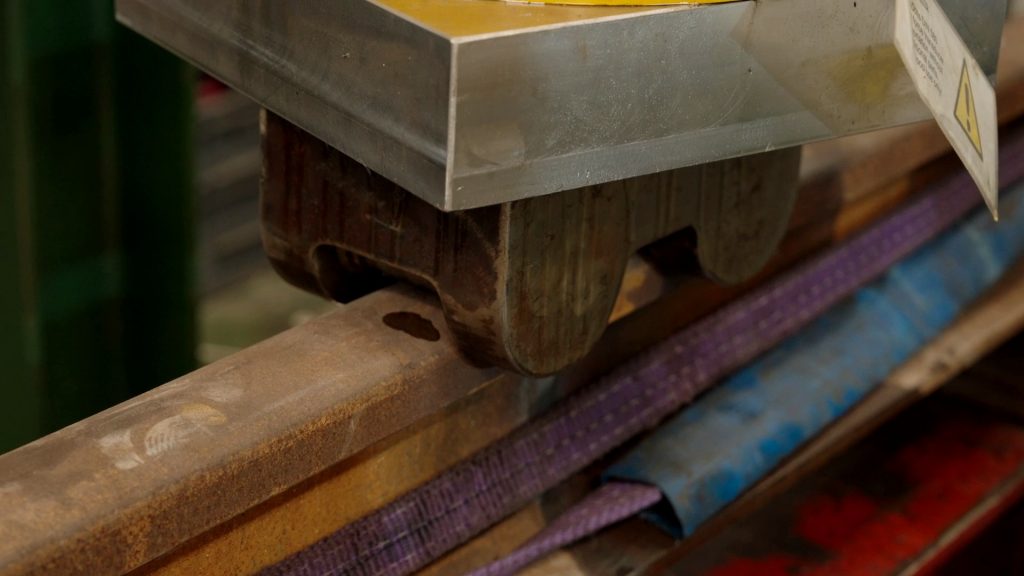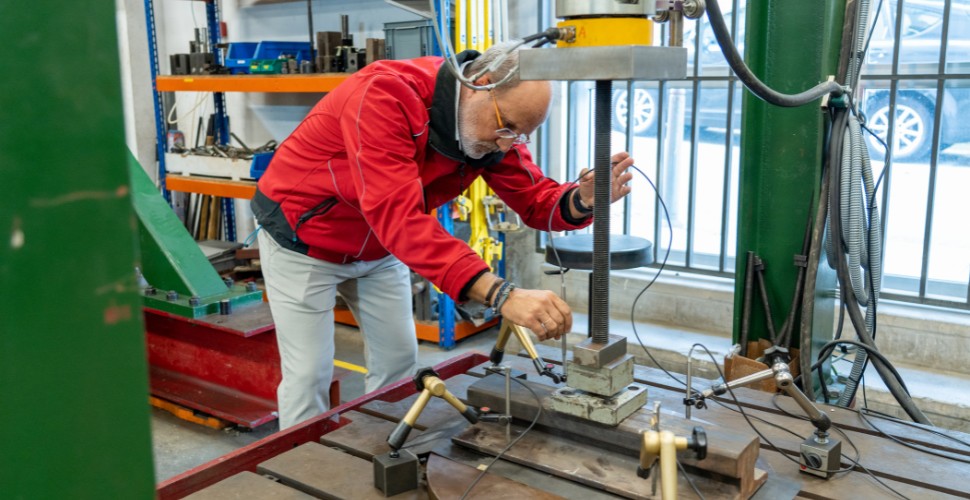LADICIM and Acciona develop a solution to reduce noise and vibration emissions from trains using recycled tires
The results of the doctoral thesis with an industrial mention have been awarded in the first call of the Innovation Chair Project of the University of Cantabria
One of the main challenges of High Speed lines, conventional and metropolitan railways is the transmission of vibrations generated by the passage of trains, both on ballast tracks and on concrete slab tracks. A problem that affects the comfort of the traveler and generates an acoustic impact that harms the quality of life of citizens who live around the railway infrastructures.
To look for possible solutions, LADICIM and Acciona signed a collaboration agreement and developed a research project that later led to a Doctoral Thesis with Industrial Mention. The focus of the thesis, with a high sustainability component, also facilitated access to European funding through the LIFE Program for the Environment and Climate Action. The thesis, called ‘Development of environmentally friendly elastomers for application on railways’, has been defended by Faiver Botello, Innovation Manager at Acciona, and directed by LADICIM researchers José Antonio Casado and Isidro Carrascal.
The goal of the research was to develop and validate, both at the laboratory and field level, an elastomeric blanket for ballasted tracks, where the railway superstructure is supported by aggregates, and an elastic padfor concrete slab track systems, manufactured from out-of-use tires (NFU). This material was chosen because it is one of the wastes that has generated the most environmental problems in recent years. According to the annual report of the European Tire and Rubber Manufacturers Association (ETRMA, 2015), in Europe alone 2.6 million tonnes of tires reach the end of their useful life each year, awaiting secondary use.

The Thesis had, on the one hand, to show the environmental benefits derived from the recovery of a large quantity of NFU and, on the other, to develop and verify the technical feasibility of a new environmentally friendly elastic material, made based on a mixture of used tire granules and resins for railway applications, thus opening an innovative alternative to expensive commercially available products.
It is estimated that the solution finally obtained allows the reuse of 7 tires for each linear meter of blanket under ballast and between 0.3 and 0.5 tires per linear meter for pads for a plate track system with sleepers.
The materials were first tested at LADICIM to determine the long-term behavior and durability of the developed elements against loads that simulate the passage of vehicles. Finally, two full-scale test sections were executed and monitored. One in the Cabanyal tunnel (Valencia), where an elastic pad for slab tracks was tested, in which the track superstructure is supported on concrete slabs. And another in a track yard in Aranda de Duero (Burgos), where an elastomeric blanket for ballasted tracks was tested.
In both cases, the results were satisfactory, so Acciona decided to patent the solutions, thus increasing its capacity to offer alternative and competitive solutions from a technical and economic point of view to those that are applied conventionally.
Award from the Innovation Chair of the University of Cantabria
The project developed by LADICIM and Acciona has been the the only thesis awarded in the first call for the Innovation Chair Project awards from the University of Cantabria, which has recognized 23 initiatives, among the more than 100 presented, for their capacity to generate and develop innovations applicable to the productive fabric.
In the last 4 years, LADICIM has presented five thesis with an industrial mention together with different partners on different topics related to the design and optimization of materials processing or monitoring to improve the structural integrity of components. The Laboratory’s intense collaboration with companies from different sectors, both to test and certify materials and in the development of R&D projects, has allowed it to enhance its knowledge transfer capacity thanks to projects that reach the market, thus returning to the society part of what it invests in the University. It is also one of its main sources of income to finance the purchase and maintenance of the Laboratory’s equipment and to provide professional growth opportunities for new researchers.
Through the Industrial Doctorate, LADICIM has collaborated with companies from different sectors to develop a wide variety of applied research. Some recent examples:
Doctoral student: Manuel Ángel Díaz García.
Company and Position: WSP SPAIN. Calculation Engineer.
Directors: Sergio Cicero.
Doctoral student: Laura González Suárez.
Company and Position: INGECID. Engineer in the Projects Department.
Directors: Carlos Thomas, Jesús Setién.
Doctoral student: Faiver Botello Rojas.
Company and Position: ACCIONA INFRAESTRUCTURAS, Lead Project Manager.
Directors: José A. Casado, Isidro Carrascal.
Doctoral student: María Ángeles Sánchez Pérez.
Company and Position: PCM RAIL ONE, Segment Manager Engineering.
Directors: José A. Casado, Stephan Freudenstein.
Doctoral student: Estela Ruiz Martínez.
Company and Position: GLOBAL STEEL WIRE, Technical Management.
Directors: Diego Ferreño, Miguel Cuartas.
Doctoral student: Alejandro Pérez Núñez.
Company and Position: COMPONENTS TECHNOLOGICAL CENTER, Projects Coordinator. Digital Twins tech.
Directors: Isidro Carrascal, John A. Polanco, Sergius Cicero.
Doctoral student: Jorge Gómez Hoyos.
Company and Position: ACCIONA INFRAESTRUCTURAS, Innovation Manager.
Directors: José A. Casado, Isidro Carrascal.



